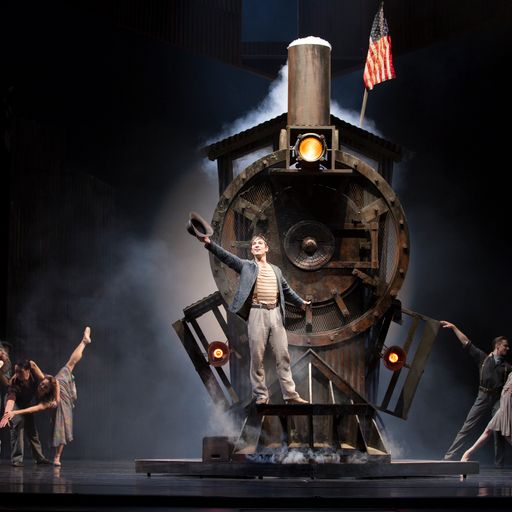 |
Paul Taylor Dance Company in Syzygy. Photo: Ron Thiele |
Summers upstate offer many pleasures—ambient temps, foliage, farm markets, and culture. I took in two dance performances done in open-air, covered amphitheaters: Paul Taylor Dance Company at PS21 in Chatham, NY, and New York City Ballet at Saratoga Performing Arts Center in Saratoga Springs, NY. As with any outdoor venues, weather can be a gamble, but for both events it cooperated.
 |
| Madelyn Ho & Alex Clayton in Airs. Photo: Ron Thiele |
Among the Taylor dancers, Madelyn Ho has emerged as a busy star, featuring prominently in all three dances. Also a doctor, Ho moves crisply and brightly, radiating far beyond her small frame. Devon Louis is also ubiquitous, with a strong bearing and lofty jump. Alex Clayton, also with impressive ballon, seems indispensable. And John Harnage has assumed a gravity to go along with his precision. Some newer faces include the lush Jada Pearman, energetic and ebullient Austin Kelly, and the newest dancer, Kenny Corrigan, a large, swift man, is a welcome bright presence.
 |
Adrian Danchig |
 |
NYCB in Glass Pieces. Photo: Paul Kolnik |
The company's run has shrunk to a short week, down from many weeks years ago. I saw a program with Balanchine's Chaconne, Summerspace by Merce Cunningham, and Glass Pieces by Jerome Robbins; another program featured A Midsummer Night's Dream. Not surprisingly, it's a completely different experience than watching in the climate-controlled Koch Theater. As the evening progresses, temperatures sink and breezes kick up. The open side walls permit views of the darkening sky, or impending rain, and you gain an awareness of the totality of the environment and the world beyond the theater. Still, the dance is the focus, and the company showed its stylistic flexibility in this mixed program, ranging from Chaconne's classical ballet with a jazzy flair, the austere modernism of Cunningham softened by Rauschenberg's stippled cyc and unitards, and the urban restlessness of Robbins' stage crossings inspired by Philip Glass' restlessly motivic composition.
Even though I've seen both companies in NYC many, many times over the years, seeing them in plein air settings, surrounded by different, appreciative audiences, energizes my perspective on them and makes me realize how lucky I've been to track their evolution.



